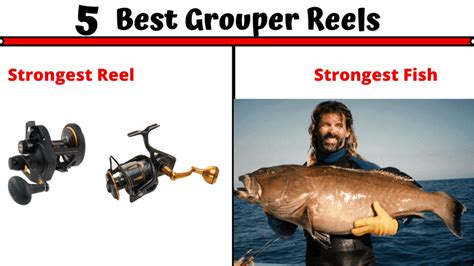
Restaurants across Florida and beyond are scrambling to revise their menus as skyrocketing grouper prices force chefs to remove the popular fish dish or seek less expensive alternatives. The surge in price, driven by a combination of factors including supply chain disruptions, increased demand, and environmental pressures, is significantly impacting restaurant profitability and consumer dining habits.
The beloved grouper, a staple on Florida menus and a favorite among seafood enthusiasts, has become increasingly difficult to procure at a reasonable cost. “It’s almost impossible to get grouper right now without charging an arm and a leg,” stated several restaurant owners across the Gulf Coast who preferred to remain anonymous due to competitive reasons. As a result, establishments are being forced to make tough choices, from temporarily suspending grouper offerings to creatively substituting with more affordable fish species.
The price hikes are substantial. According to the National Marine Fisheries Service, the average wholesale price of grouper has increased by over 40% in some regions compared to last year. This dramatic increase is squeezing already-thin profit margins for restaurants still recovering from the economic impacts of the COVID-19 pandemic. Many restaurants are hesitant to pass the full cost increase onto consumers, fearing a decline in customer traffic.
“We’re trying to absorb as much of the cost as we can, but there’s only so much we can do before it starts affecting our bottom line,” explained a restaurant manager in Tampa Bay. “Our customers expect to see grouper on the menu, but they also have price expectations. It’s a very delicate balancing act.”
The rising cost of grouper isn’t just affecting restaurants specializing in seafood. Even establishments with broader menus are feeling the pressure as they compete for limited supplies and navigate volatile market conditions. Some are exploring alternative fish options, such as snapper or mahi-mahi, but face the challenge of educating consumers and ensuring the substitutes meet customer expectations.
“It’s not just about finding another white fish,” said Chef Emily Carter, owner of a popular seafood restaurant in Sarasota. “Grouper has a unique flavor and texture that people love. We need to find a substitute that offers a similar culinary experience, and that’s not easy.”
The reasons behind the grouper price surge are multifaceted. Supply chain disruptions, exacerbated by geopolitical events and logistical bottlenecks, have made it more difficult and expensive to transport fish from fishing grounds to restaurants. Increased demand, driven by a recovering economy and a renewed interest in dining out, has further strained available supplies. Environmental factors, such as warming ocean temperatures and habitat degradation, may also be contributing to declining grouper populations in some areas.
The situation is prompting calls for greater transparency and sustainability in the fishing industry. Some restaurant owners are advocating for stricter regulations to protect grouper stocks and ensure responsible fishing practices. Others are exploring direct relationships with local fishermen to secure a more reliable and affordable supply of fish.
“We need to work together to find long-term solutions that protect our marine resources and support our local restaurants,” said a spokesperson for the Florida Restaurant and Lodging Association. “The future of grouper on our menus depends on it.”
The long-term implications of the grouper price spike remain uncertain. If prices remain elevated, it could permanently alter dining habits and force restaurants to rethink their menus. Consumers may become more accustomed to alternative fish species, and restaurants may focus on dishes that are less reliant on grouper.
For now, however, the immediate concern is how to navigate the current crisis and keep customers satisfied. Restaurants are experimenting with creative pricing strategies, offering smaller portions of grouper, and promoting other seafood options. They are also communicating openly with customers about the challenges they face and explaining the reasons behind the menu changes.
“We’re being honest with our customers,” said the Tampa Bay restaurant manager. “We’re telling them that grouper is more expensive right now, but we’re still committed to offering high-quality seafood at a fair price. We hope they understand.”
The situation underscores the complex interplay between environmental factors, economic forces, and consumer preferences in the restaurant industry. As grouper prices continue to fluctuate, restaurants will need to adapt and innovate to survive and thrive in a challenging environment. The future of the iconic grouper dish, for now, hangs in the balance.
The State of Florida’s Grouper Industry:
Grouper is not just a popular menu item; it’s a significant part of Florida’s cultural and economic identity. The grouper industry in Florida, which includes both commercial and recreational fishing, contributes millions of dollars to the state’s economy each year. The fish is a symbol of the state’s coastal heritage, and its presence on restaurant menus is a source of pride for many Floridians.
The most common types of grouper found on Florida menus include gag grouper, red grouper, and black grouper. These species are prized for their firm, white flesh and mild, sweet flavor. Grouper can be prepared in a variety of ways, from grilled and blackened to fried and baked. It is often served as a main course, but it can also be used in sandwiches, salads, and appetizers.
However, the grouper industry faces a number of challenges. Overfishing, habitat loss, and pollution have all contributed to declining grouper populations in some areas. Climate change is also a growing threat, as warming ocean temperatures can disrupt grouper spawning and migration patterns.
In recent years, the Florida Fish and Wildlife Conservation Commission (FWC) has implemented a number of regulations to protect grouper stocks. These regulations include size limits, bag limits, and seasonal closures. The FWC also conducts regular stock assessments to monitor grouper populations and adjust management strategies as needed.
Despite these efforts, the grouper industry remains vulnerable. The recent price spike is a reminder of the fragility of the ecosystem and the importance of sustainable fishing practices. It also highlights the need for greater collaboration between fishermen, restaurants, and government agencies to ensure the long-term health of the grouper industry.
Global Grouper Market Dynamics:
While the article focuses primarily on the impact of rising grouper prices on Florida restaurants, the situation is indicative of broader trends in the global grouper market. Grouper is a popular seafood choice in many parts of the world, particularly in Asia and the Caribbean. As a result, demand for grouper is increasing globally, putting pressure on wild stocks and driving up prices.
Aquaculture, or fish farming, is playing an increasingly important role in meeting the global demand for grouper. Grouper aquaculture is practiced in several countries, including China, Indonesia, and Vietnam. However, grouper aquaculture can also have negative environmental impacts, such as habitat destruction and pollution.
Sustainable aquaculture practices are essential to ensure the long-term viability of the grouper industry. This includes using responsible farming methods, minimizing environmental impacts, and promoting transparency and traceability throughout the supply chain.
The global grouper market is also influenced by international trade agreements and regulations. Tariffs, quotas, and import restrictions can all affect the price and availability of grouper in different markets.
The rising cost of grouper is a complex issue with global implications. It requires a multifaceted approach that addresses both supply and demand, promotes sustainable fishing and aquaculture practices, and fosters greater collaboration between stakeholders.
Restaurant Responses and Menu Adaptations:
Faced with soaring grouper prices, restaurants are employing a variety of strategies to mitigate the impact on their businesses and customers. These responses range from simple menu adjustments to more creative and innovative solutions.
- Price Increases: The most straightforward approach is to raise the price of grouper dishes on the menu. However, restaurants are often hesitant to do this too drastically, fearing that it will deter customers.
- Portion Control: Another option is to reduce the portion size of grouper dishes while maintaining the same price. This allows restaurants to save on costs without significantly impacting the customer experience.
- Menu Diversification: Many restaurants are expanding their menus to include a wider variety of seafood options, reducing their reliance on grouper. This can involve introducing new dishes featuring alternative fish species, such as snapper, mahi-mahi, or cobia.
- Creative Substitutions: Some chefs are experimenting with using less expensive fish species in dishes that traditionally feature grouper. This requires careful selection and preparation to ensure that the substitute fish offers a similar flavor and texture profile.
- Seasonal Specials: Restaurants can also offer seasonal specials featuring locally sourced seafood that is in abundance and therefore more affordable. This allows them to take advantage of market fluctuations and offer customers unique and exciting dishes.
- Value-Added Preparations: Some restaurants are focusing on value-added preparations, such as seafood stews or pasta dishes, that incorporate smaller amounts of grouper along with other ingredients. This allows them to offer grouper dishes at a more affordable price point.
- Direct Sourcing: Building direct relationships with local fishermen can help restaurants secure a more reliable and affordable supply of grouper. This also supports local communities and promotes sustainable fishing practices.
- Transparency and Communication: Openly communicating with customers about the challenges of rising grouper prices can help manage expectations and build trust. Restaurants can explain the reasons behind menu changes and offer recommendations for alternative dishes.
- Promotional Offers: Restaurants can use promotional offers, such as discounts or bundled deals, to incentivize customers to try alternative seafood options. This can help shift demand away from grouper and towards more affordable choices.
- Menu Engineering: Analyzing menu performance and making strategic adjustments can help restaurants optimize pricing, reduce waste, and maximize profitability in the face of rising grouper prices.
The specific strategies that restaurants employ will depend on their individual circumstances, including their location, menu, customer base, and relationships with suppliers. However, the common goal is to find creative and sustainable ways to navigate the challenges of the grouper price spike and continue offering high-quality seafood to their customers.
Consumer Impact and Behavioral Changes:
The rising cost of grouper is not only affecting restaurants but also consumers who enjoy dining out and cooking seafood at home. As prices increase, consumers are likely to make adjustments to their spending habits and food choices.
- Reduced Frequency of Dining Out: Consumers may choose to dine out less frequently, particularly at restaurants that specialize in seafood or feature grouper prominently on their menus.
- Shift to More Affordable Restaurants: Consumers may opt to dine at more affordable restaurants that offer a wider range of menu options and are less reliant on expensive seafood.
- Increased Home Cooking: As dining out becomes more expensive, consumers may choose to cook more meals at home, potentially substituting grouper with less expensive fish options.
- Substitution of Seafood Choices: Consumers may switch from ordering grouper to other, more affordable types of seafood, such as snapper, mahi-mahi, or shrimp.
- Acceptance of Price Increases: Some consumers may be willing to pay higher prices for grouper dishes, particularly if they value the taste and experience of dining at a particular restaurant.
- Demand for Smaller Portions: Consumers may be more accepting of smaller portion sizes of grouper dishes if it means that the price remains relatively stable.
- Exploration of Alternative Cuisines: Consumers may explore different cuisines that are less reliant on seafood, such as vegetarian, Italian, or Asian food.
- Increased Awareness of Sustainability: The grouper price spike may raise consumer awareness of the importance of sustainable fishing practices and the impact of overfishing on seafood prices.
- Support for Local Fisheries: Consumers may choose to support local fisheries and restaurants that source their seafood responsibly.
- Flexitarian Diets: Some consumers might adopt a more flexitarian diet, reducing their overall consumption of meat and seafood and incorporating more plant-based meals into their diets.
The extent to which consumers change their behavior will depend on a variety of factors, including their income, dietary preferences, and awareness of the issues surrounding the grouper industry. However, it is clear that the rising cost of grouper is having a significant impact on consumer choices and driving a shift towards more affordable and sustainable seafood options.
Long-Term Sustainability and Future Outlook:
The grouper price spike raises important questions about the long-term sustainability of the grouper industry and the future of seafood consumption in general. Addressing these challenges requires a multifaceted approach that involves fishermen, restaurants, consumers, and government agencies.
- Sustainable Fishing Practices: Implementing and enforcing stricter regulations to prevent overfishing and protect grouper stocks is essential. This includes size limits, bag limits, seasonal closures, and gear restrictions.
- Habitat Restoration: Restoring and protecting critical grouper habitats, such as coral reefs and mangrove forests, is crucial for ensuring the long-term health of grouper populations.
- Aquaculture Development: Investing in research and development to improve grouper aquaculture practices and minimize their environmental impacts is necessary to meet the growing global demand for grouper.
- Traceability and Transparency: Enhancing traceability and transparency throughout the seafood supply chain allows consumers to make informed choices about the seafood they purchase and support sustainable fishing practices.
- Consumer Education: Educating consumers about the importance of sustainable seafood and the challenges facing the grouper industry can help them make more responsible choices.
- Community Engagement: Engaging local communities in the management of grouper resources and promoting sustainable fishing practices can help ensure the long-term health of the industry.
- Climate Change Mitigation: Addressing climate change and its impacts on ocean ecosystems is critical for protecting grouper populations and other marine life.
- International Cooperation: Collaborating with other countries to manage shared grouper stocks and promote sustainable fishing practices is essential for addressing the global challenges facing the industry.
- Diversification of Seafood Choices: Encouraging consumers to diversify their seafood choices and explore alternative species can help reduce pressure on grouper stocks and promote a more sustainable seafood industry.
- Adaptive Management: Implementing adaptive management strategies that allow for adjustments to regulations and management practices based on ongoing monitoring and assessment of grouper populations is crucial for ensuring the long-term sustainability of the industry.
The future of the grouper industry depends on the collective efforts of all stakeholders to promote sustainable fishing practices, protect marine ecosystems, and educate consumers about the importance of responsible seafood choices. By working together, we can ensure that grouper remains a part of our culinary heritage for generations to come.
Frequently Asked Questions (FAQ):
Q1: Why is grouper so expensive right now?
A: The rising cost of grouper is due to a combination of factors, including supply chain disruptions, increased demand, and potentially environmental pressures affecting grouper populations. Supply chain issues make it more difficult and expensive to transport the fish, while higher demand strains the existing supply.
Q2: What are restaurants doing in response to the high grouper prices?
A: Restaurants are adapting in several ways. Some are raising prices, reducing portion sizes, or temporarily removing grouper from the menu. Others are substituting with more affordable fish like snapper or mahi-mahi, or creating dishes that use smaller amounts of grouper in combination with other ingredients.
Q3: How can I, as a consumer, deal with the higher cost of grouper when dining out?
A: Consider ordering alternative fish dishes, exploring other cuisines, or opting for restaurants with more affordable options. You can also ask restaurants about their sourcing practices and support those that prioritize sustainability. Cooking seafood at home can also be more economical.
Q4: Are there any long-term solutions to the grouper price problem?
A: Long-term solutions include sustainable fishing practices, habitat restoration, and developing sustainable aquaculture methods. International cooperation, stricter regulations, and consumer education about responsible seafood choices are also crucial.
Q5: Will grouper prices ever go back down to what they were before?
A: It’s difficult to say definitively. If supply chain issues ease, fishing practices become more sustainable, and demand stabilizes, prices could potentially decrease. However, environmental factors and global market dynamics will continue to play a significant role, making it uncertain whether prices will return to previous levels.









